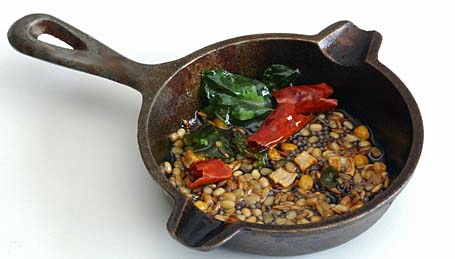

Tiny Brown Mustard Seeds from Andhra Pradesh also Known as “Chitti Aavalu” in Telugu
and Black Mustard Seeds from Bharath
According to old-world tales, there was an interesting exchange of messages between King Darius of Persia and Alexander the Great.
King Darius sent a sack of sesame seeds to Alexander to show the vastness of his army. To this, Alexander responded with a sack of mustard seeds to imply not only the number but also the power, energy and the fiery nature of his men.
Mustard seeds are one of the oldest spices known to mankind and valued for their antiseptic, antibacterial, carminative and warming properties. They are also good source of omega-3 fatty acids, iron, calcium and protein. Mustard greens are an excellent source of Vitamin A, iron, zinc and improve blood circulation.
Mustard is a very economical plant. Its leaves are used as a vegetable, flowers and pods in salads and seeds as a spice. Mustard seeds hardly give away any fragrance when whole. This is because the enzyme that creates the hot, pungent taste of mustard is activated when it comes in contact with liquids. And for this very reason we wait for the mustard seeds to pop in our tadka. The popping of mustard seeds imparts the sharpness and nutty flavor to the dish.
The vibrant yellow flowers of mustard plants shout out the impending arrival of spring to the world. Folks in Punjab celebrate Basant Panchami when spring arrives with amazingly beautiful, bright and cheery rolling fields of mustard. A favorite of Bollywood films, fantastically yellow mustard fields are breathtaking and romantic. When you talk about mustard and Punjab, it is only natural that one thinks of “Sarson Ka Saagâ€Â. This one of a kind dish is best enjoyed with Makke de Roti (corn roti).
 Sarson Ka Saag with Roti, and
Sarson Ka Saag with Roti, and
Toasted Mustard Seeds, Part of Traditional Tadka or Popu

There are three types of mustard seeds – white (actually they look more yellow than white), black and brown. Brown mustard looks very identical to black mustard but has only 70% of the pungency. Mustard seeds are harvested when the pods are fully developed but not yet ripe. The mustard hay is then stacked to dry and then threshed to remove the seeds.
Oil of mustard is a rubefacient. It irritates the skin when applied and dilates the small blood vessels underneath the skin. This increases the flow of blood to the skin and makes it feel warm. Mustard plasters are used to relieve chest colds and coughs. To make a mustard plaster, mix some powdered mustard with warm water and spread it as a paste on a doubled piece of soft cloth. Do not apply this plaster directly on the skin. Take care to see that you don’t keep it on for more than 15 minutes.
A mustard foot bath is a traditional remedy for colds and headaches. Add one teaspoon of mustard powder to a bowl of hot water and soak your feet for about 15 min. The warming nature of mustard clears the congestion by drawing it away from the source. These foot baths or mustard plasters should be used carefully since mustard can irritate skin if used for longer durations. Also never use this remedy on small children.
I have read that it is fairly easy to grow mustard. If you plan to try it, make sure you choose a sunny area in your yard. Mustard is an annual plant and germinates easily. It spreads easily too so you just need to make sure that it doesn’t take over your entire yard.
I just loved the idea of harvesting our own mustards seeds, like this gardener had done and I am going to give it a try this year. Only time will tell whether I can actually get substantial amount of mustard seeds from my garden or not, but I will at least get a small piece of Punjab with beautiful and bright yellow flowers.
Guest Article by ~ Anjali Damerla of Supreme Spice
Photography by: Indira Singari
******************
If you have questions about Mustard spice, please post them in comments section. Anjali would be glad to answer them for you. Thanks.










